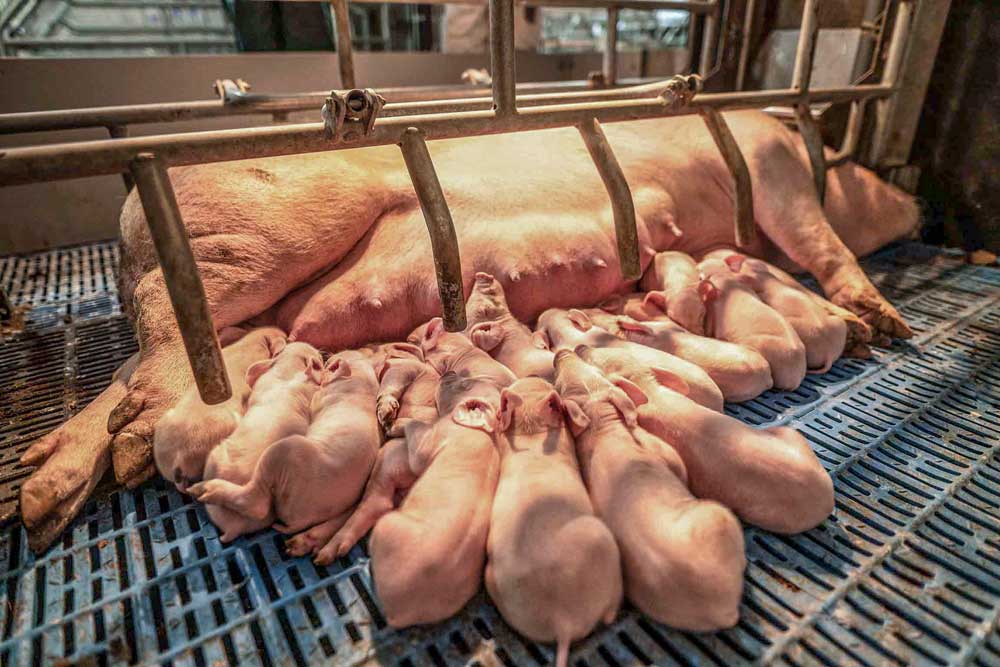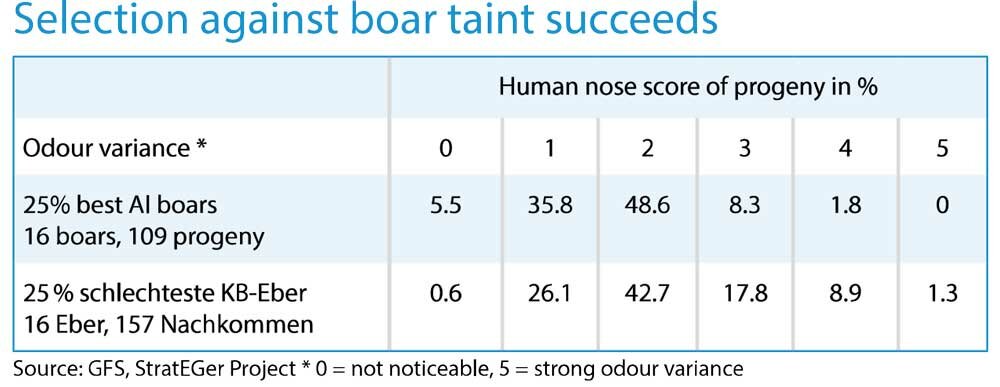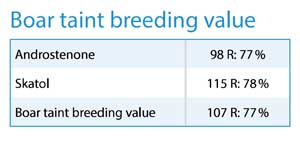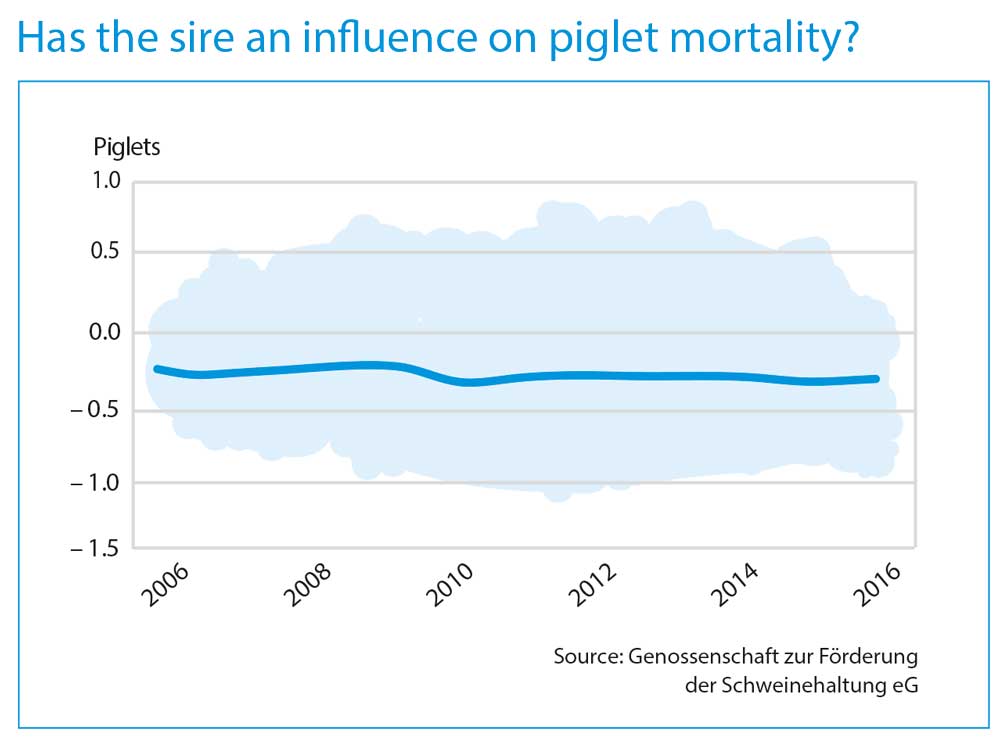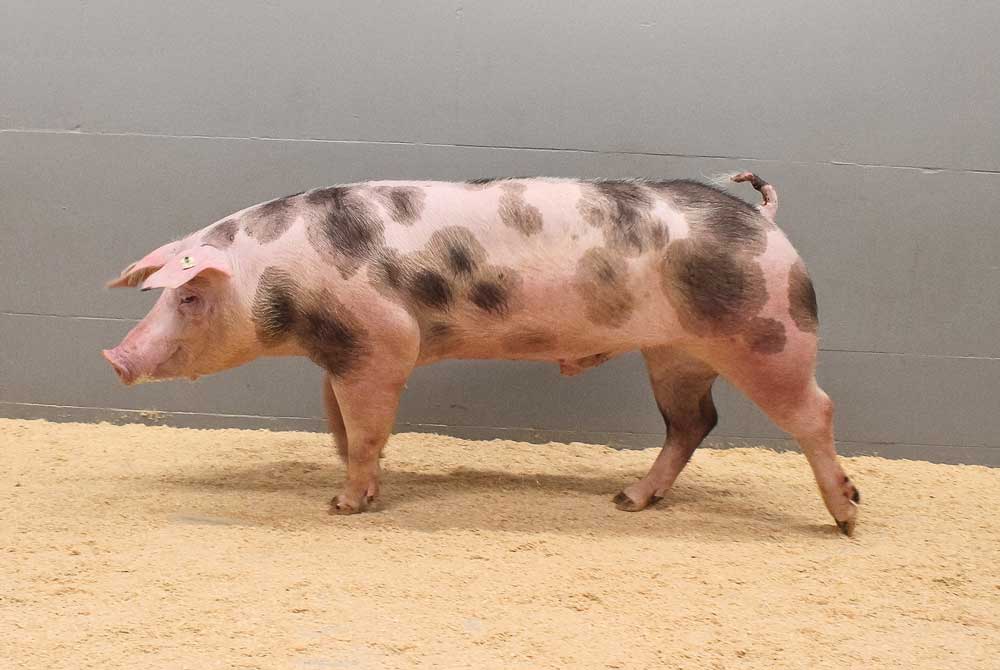Pig breeding: Increasing welfare via genetics
By Christin Benecke, DLG Mitteilungen
Whether or not you’re already participating as pig producer in a (paid for) animal welfare programme such as the ITW (Initiative Animal Welfare), still more input by farmers in animal welfare will be demanded in the future. Starting point nowadays in this respect concerns not only housing and management: with the knowledge that many welfare-relevant traits are generically influenced breeding becomes more important too.
Where can a farmer start in seeking the right genetic input with this in mind? Without a doubt, selection of sow genetics is top of the list for the piglet producer. Increasingly in focus here is the capability of producing large, uniform litters. Also crucial: good mothering ability and long production lifetime. Admittedly, a farmer won’t change sow genetics for the sole reason of influencing one or other animal welfare criterion. There’s too much depending on other aspects: the health status of the multiplier herd and the long time-horizon until the effects can be observed.
But selection of the right AI sires can offer speedier developments in this context. »Here, the farmer can plan a breeding strategy, and try it out too«, says Dr Meike Friedrichs from the Piglet Production Support Cooperative GFS. The AI stations run by GFS increasingly note sow herd owners now ask about the influence of AI sires on welfare relevant characteristics. So, what are these characteristics, and which ones currently stand in the foreground of breeding activities?
Boar taint
Being able to completely avoid activities such as castration is an important point in the debate over more welfare in pig production. This operation itself is one of the most prominent public concerns. But when not carried out on male feeding pigs there’s the danger of boar taint giving the meat an objectionable odour, a worrying development for all concerned in the pig meat production chain.
However, whether an entire male feeder develops this taint largely depends on its production of the sexual compounds androstenone and skatole. Recent research work indicates that heritability of androstenone via sire lines lies by over 60%, and over 40% for skatole. These are much higher values than expected. Thus, welfare opportunities lie in careful selection of terminal sires for reduced boar taint in progeny.
A decisive factor here is that any claimed breeding value in this respect is very reliable. Alongside data from progeny tests, the GFS includes own performance data in the form of AI sire fat sample analyses in boar taint breeding value calculations. This leads to breeding value reliability of around 70%, helping to ensure that less boar taint susceptible animals end up on the hook.
There are already AI sires available with positive breeding values for reducing boar taint and tests confirm the success of their breeding influence.
Piglet mortality
Public criticism also focuses nowadays on the substantial preweaning mortality in litters from today’s very fertile sow lines. Naturally, keeping such losses as low as possible is also economically desirable. A joint investigation by GFS, German Genetic and the University of Bonn investigated the boars’ genetic influence on litter member survival rates.
Piglet losses were recorded as part of the progeny testing programme carried out on test farms and combined with data from pure Pietrain breeding herds. Bonn University calculated a heritability of 10% for the trait preweaning mortality – a figure definitely above the expectations of project participants. This means that the influence of the boar on this trait is comparable to its influence on the fertility trait »born alive piglets«.
With all breeding companies, piglet mortality is an important theme receiving appropriate attention as sire selection criterion. However, companies do not offer concrete breeding values for terminal sires in this respect. »Our aim is to be able to give AI boars a reliable breeding value for preweaning mortality«, explains Friedrichs. In concrete terms, the question to be answered is whether a boar can, for instance, pass on 1% more, or some 2% less, preweaning mortality. This information enables the farmer to keep an eye on welfare aspects among the many other factors of boar selection.
Within GFS, the hope is that this piglet survival breeding value might be available from April 2020. At the same time, work is ongoing towards a part breeding value for the trait piglet liveweight, which should offer information on weight at birth and its variation throughout the litter. With this, in addition to the already available qualitative assessment of heritability performance, a quantitative indicator for litter quality will become available.
Tail biting
There are few concrete studies so far available regarding genetic influence on tail biting. The difficulty here lies in this being a multifactorial problem. This makes very difficult an isolated observation of only one factor - in this case the genetic influence. After all, it’s almost impossible to keep all the other factors (e.g. health status) constant amongst comparison groups.
With Gießen University, the GFS recorded groups of 12 progeny from individual boars, regularly checking and recording the state of tails and ears. First results indicate a genetic influence with heritability of some 20%. However, further replications are necessary for really reliable results.
In fact, so far establishing a tail biting breeding value for individual sires has not proved possible. A target might be ranking of boars according to breeding values denoting which sires are better for producing undocked feeders that survive unbitten. Whether this approach is a practicable one, remains unclear.
How reliable are breeding values?
Breeding value reliability is a crucially important theme in pig production and AI sire selection. This reliability increases the more data flows into the assessment. Normally, this data are exclusively gathered from pedigree breeding records. On their own, these offer relatively low reliability of from 0 to 50%, depending on trait, so that significance of test boar breeding values is basically limited.
If data from progeny tests of AI sires were to be integrated in the breeding value assessment, breeding value reliability could increase then from 60 to over 90%. Necessary here is a cooperation between breeding companies and AI stations conducting progeny testing. This is not yet standard, although there are initiatives in this direction. The example must be what has already occurred in cattle breeding. Here, it has been normal for many years to produce bull breeding values with the appropriate estimated reliability (R). After all, only then can a farmer safely assess how much importance should be given to a particular breeding value!
Summary
Not least because of current massive interest in animal welfare in livestock production, there’s a focus on the influence of genetics on welfare-relevant criteria. Greatly increased awareness is also encouraged by state-supported research projects. Genetics as a tool for ameliorating welfare problems has been underestimated. This has become clear. The individual heritabilities are, admittedly, not immense. But breeders must keep an eye on the respective traits. The past concentration on breeding for performance traits alone is now history.
Piglet producers and pig feeders want to exploit the possibilities available through breeding, especially through selection of terminal sires. Required for this are individual breeding values for animal welfare relevant traits with demonstrative statistical reliability.
What finally counts for breeding too, is the integration of animal welfare and production economy. Only when the financial results continue to be acceptable will genetics or breeding lines aimed at increased support of animal welfare become generally accepted.
(This text is based on a talk by Dr Meike Friedrichs, GFS, given at the Hessischen Schweinetag (Hessian Pig Day) 2019 in Alsfeld, Germany.)



